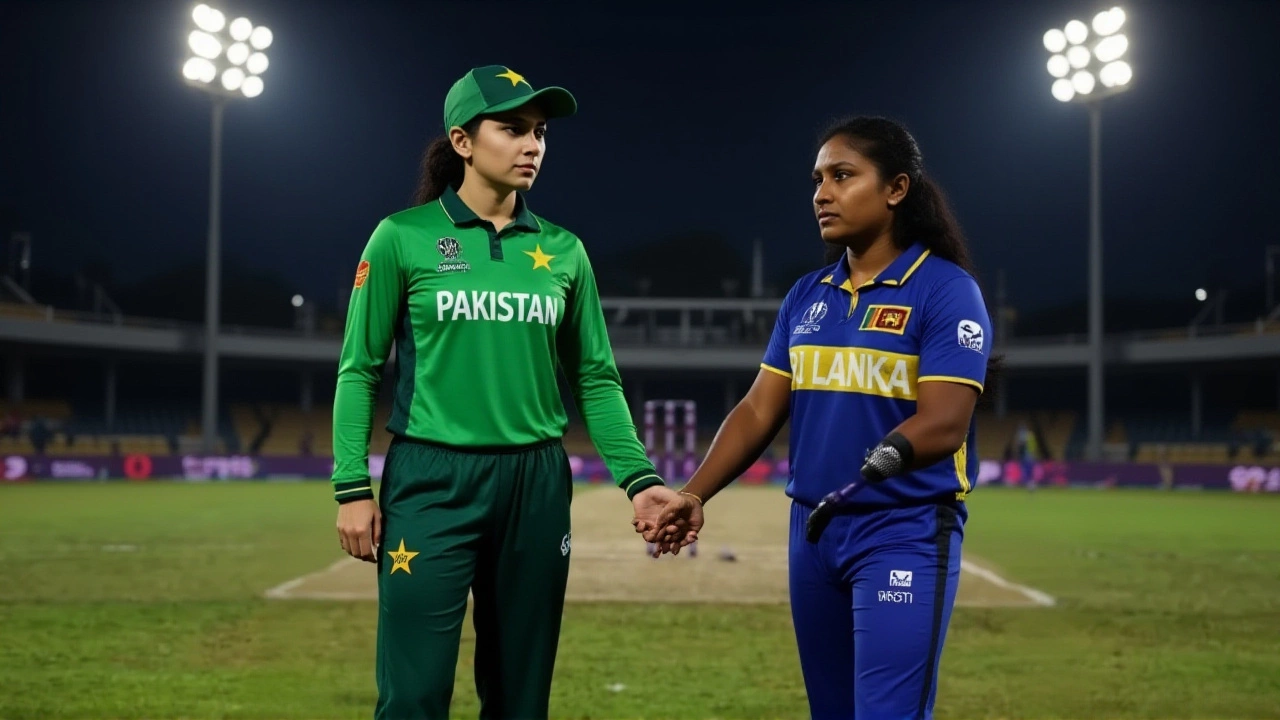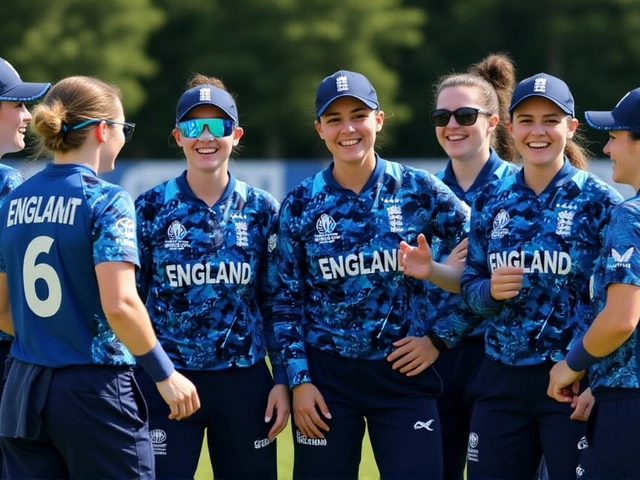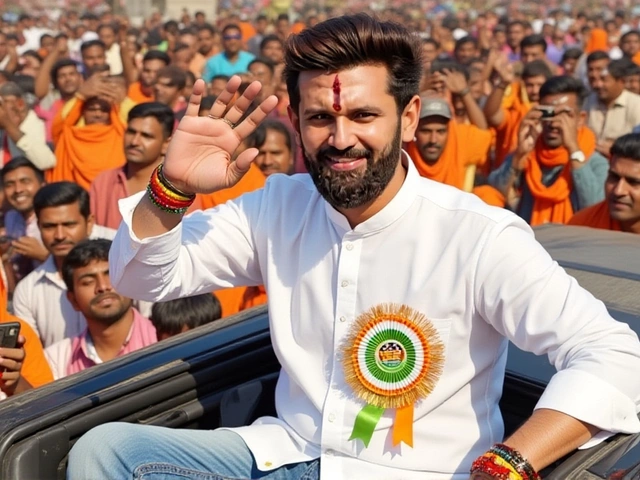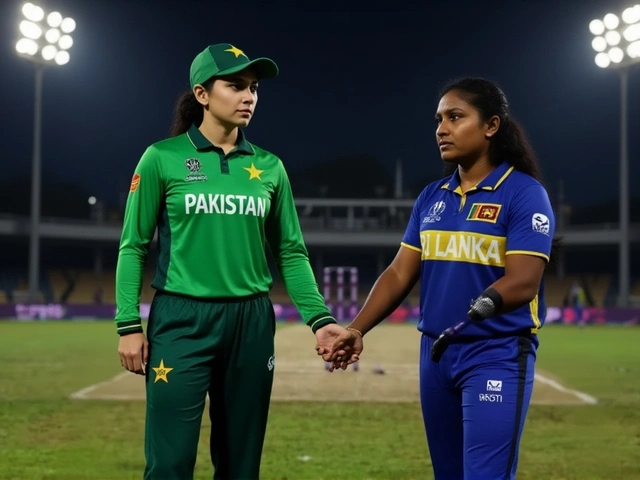When the final ball of the 50th over sailed past the boundary rope, the roar from the crowd in Rawalpindi wasn’t just relief—it was pure disbelief. Pakistan had just held off a furious Sri Lanka chase to win by six runs in the first ODI of the 2025-26 series, a match that swung like a pendulum from the first over to the last. The final scorecard read 299/5 for Pakistan, 293/9 for Sri Lanka—six runs short, and a hundred different ways it could’ve gone wrong. But it didn’t. Not this time.
A Top-Order Collapse, Then a Century That Changed Everything
Pakistan’s innings looked doomed at 45/4 inside 12 overs. Three wickets fell to left-arm spinner Maheesh Theekshana, and the pressure was mounting. Fans held their breath. The last time Pakistan collapsed like this in a high-stakes ODI, they lost by 47 runs. But then came Salman Agha. The 24-year-old middle-order batter, who’d played just seven ODIs before this match, stepped up like a veteran. He carved out a 107-run knock off 112 balls, stitching together a 126-run partnership with Hussain Talat that steadied the ship. By the time Agha fell, Pakistan had turned a shaky 45/4 into a commanding 171/4. What followed was pure chaos: Shadab Nawaz smashed 41 off 22 balls, and the last 20 overs yielded 180 runs—the kind of finish that turns ordinary totals into match-winners.Haris Rauf’s Masterclass in the Death Overs
Sri Lanka’s chase started with fireworks. They raced to 75/0 in the first ten overs, looking like they’d cruise to victory. But then came Haris Rauf. The right-arm fast bowler, often underestimated outside Pakistan, delivered a spell that will be replayed for years. In his first four overs, he ripped through the top order, removing Pathum Nissanka and Danushka Gunathilaka. His final figures—4 for 61 in 10 overs—were brutal in their precision. He didn’t just take wickets; he broke momentum. At 277/8 after 48 overs, Sri Lanka needed 23 off 12. The equation was simple: two sixes and a four. But Rauf, with the dew setting in, bowled a perfect yorker to Wanindu Hasaranga on the final ball of the 49th over, triggering a collapse that left Sri Lanka stranded at 293/9.It wasn’t just Rauf. Naseem Shah returned from injury to claim two wickets, including the key dismissal of Kusal Mendis. Faheem Ashraf chipped in with two more. And while Sri Lanka’s Wanindu Hasaranga fought heroically with 57 off 48 balls—his third consecutive ODI half-century—his effort was ultimately undone by the sheer weight of Pakistan’s bowling depth.
Why This Win Matters More Than the Score
This wasn’t just about winning a match. It was about proving something. Pakistan had lost three of their last five ODIs on home soil. Their spin department was under fire. Their captain, Shaheen Shah Afridi, was under scrutiny after a shaky start to his captaincy. But this win? It changed the narrative. Afridi, who led Pakistan to a 2-1 series win over South Africa just weeks ago, now has two consecutive ODI victories under his belt. He didn’t score a run, didn’t take a wicket—but he held the team together when things looked messy.Historically, Pakistan dominates this rivalry. Of the 157 ODIs played between the two sides, Pakistan has won 93. In Pakistan? They’ve won 18 of 30. The last bilateral series here, in 2019, ended 2-0 to Pakistan. But this win felt different. It wasn’t just about history. It was about resilience. The dew made the ball slippery. The pitch slowed down after the first 20 overs. Sri Lanka had the momentum. And yet, Pakistan held on.
What’s Next? The Series Is Far From Over
The second ODI is scheduled for November 14 in Lahore. Sri Lanka will need to adjust. Their top order looked fragile. Their death bowling was exposed. And their captain, Dasun Shanaka, admitted after the match: “We left too many runs on the table in the powerplay.” Meanwhile, Pakistan’s selectors might consider bringing in a second spinner, despite their success with just one this match. The strategy worked, but the conditions in Lahore are expected to be even slower.For fans, the real story isn’t just the win—it’s the emergence of Salman Agha as a potential long-term fixture. It’s Haris Rauf silencing doubters. It’s Shaheen Afridi growing into his role as captain. And it’s the fact that, for the first time in six years, Pakistan has beaten Sri Lanka on home soil in a high-pressure ODI chase.
Behind the Scenes: Broadcast and Logistics
Oddly enough, despite the match being played in Pakistan and featuring two major cricketing nations, no Indian broadcaster secured rights. The match was streamed live only on the official YouTube channel of Sports TV, a move that drew criticism from fans in India. In contrast, Pakistani and Sri Lankan audiences had full TV coverage. The lack of Indian broadcast rights—despite the massive viewership potential—raises questions about commercial decisions in cricket’s most lucrative market.Frequently Asked Questions
How did Salman Agha’s century impact Pakistan’s chances of winning?
Salman Agha’s 107 off 112 balls was the turning point. With Pakistan reeling at 45/4, his partnership with Hussain Talat added 126 runs and shifted momentum. Without his innings, Pakistan’s total likely would’ve been under 250. His calm approach under pressure, especially against spin, gave the lower order the platform to accelerate in the final 20 overs, turning a potentially defendable 250 into a daunting 299.
Why was Haris Rauf so effective in the death overs?
Rauf’s success came from his ability to mix pace, yorkers, and slower balls with pinpoint accuracy. With dew making the ball slippery, most bowlers struggled with control. But Rauf maintained his line and length, consistently hitting the block hole. His final over, where he dismissed Hasaranga with a perfect yorker, was a masterclass in pressure bowling—something Pakistan’s bowling attack had lacked in recent series.
What does this win mean for Shaheen Shah Afridi’s captaincy?
This victory solidifies Afridi’s position as Pakistan’s ODI captain. After a shaky start against South Africa, he’s now led the team to two consecutive wins under pressure. His tactical decisions—like using only one spinner and trusting Rauf in the death—paid off. He’s no longer seen as just a pace spearhead; he’s emerging as a calm, strategic leader who knows how to handle high-stakes games.
How does this result compare to past Pakistan-Sri Lanka ODIs in Pakistan?
Pakistan has won 18 of the 30 ODIs played on home soil against Sri Lanka. The last bilateral series here was in 2019, which Pakistan won 2-0. But this win was more dramatic: Sri Lanka chased 293 in 2019’s final match and lost by 12 runs. This time, they came within six runs of winning—making it the closest result in Pakistan’s home wins over Sri Lanka since 2006.
Why didn’t Sri Lanka’s spinners do more damage against Pakistan’s batting?
Sri Lanka’s spinners, especially Theekshana, did well early, taking three wickets. But once Pakistan’s middle order settled, they targeted the spinners aggressively. Shadab Nawaz and Agha rotated strike effectively, and the lack of variation in Sri Lanka’s spin attack—particularly the absence of a wrist-spinner after Hasaranga was restricted—allowed Pakistan to accelerate. The spinners bowled too many full tosses and wide deliveries in the middle overs, which cost them dearly.
What’s the significance of the broadcast rights issue in India?
The absence of an Indian broadcaster is unusual, given that India is the largest cricket market. The match was streamed only on YouTube via Sports TV, a move that likely cost broadcasters millions in ad revenue. Analysts suggest it’s due to complex rights negotiations between PCB and Indian networks. But it’s a missed opportunity—millions of Indian fans follow Pakistan-Sri Lanka matches, and the lack of TV access could hurt viewership long-term.





